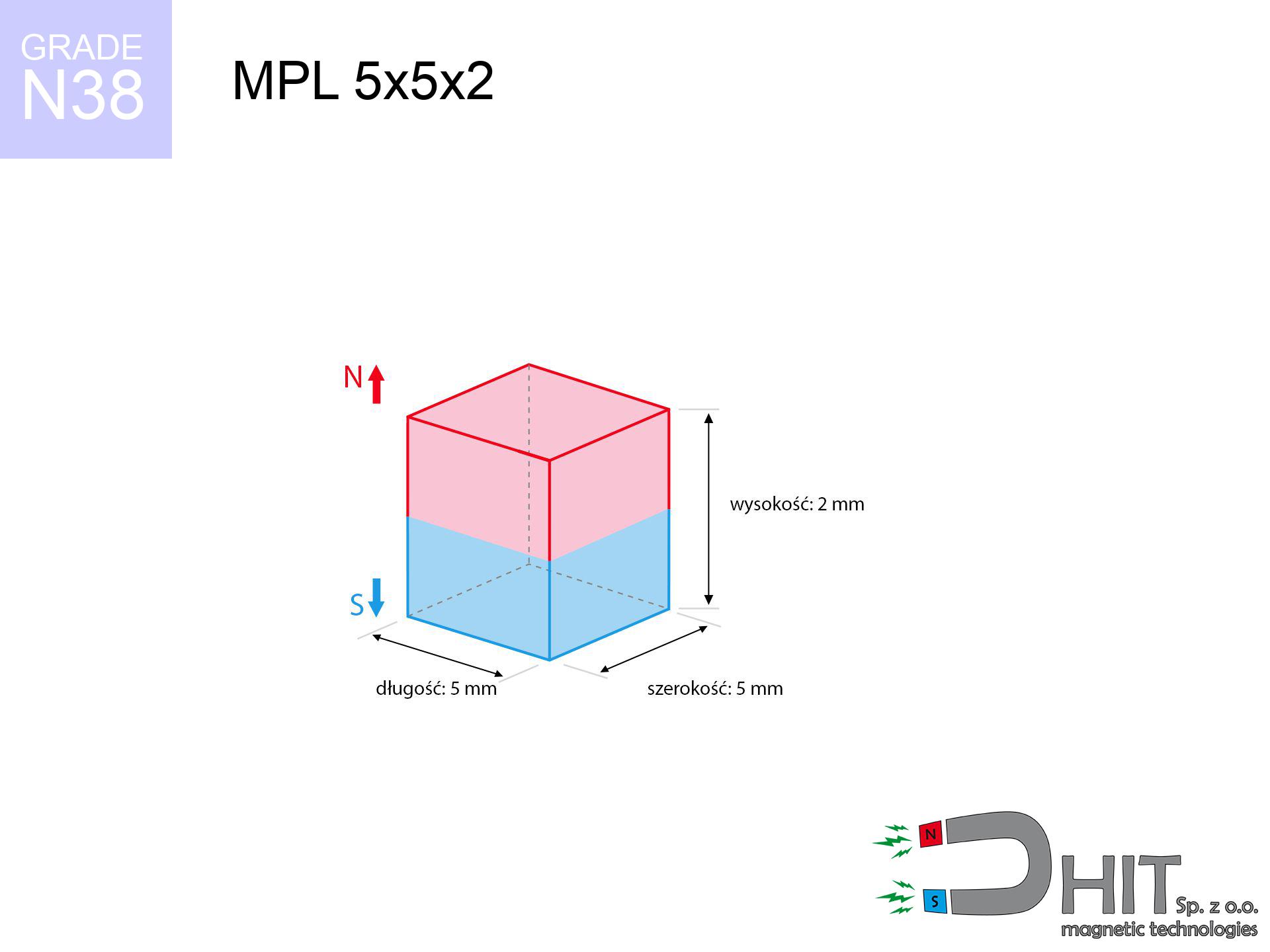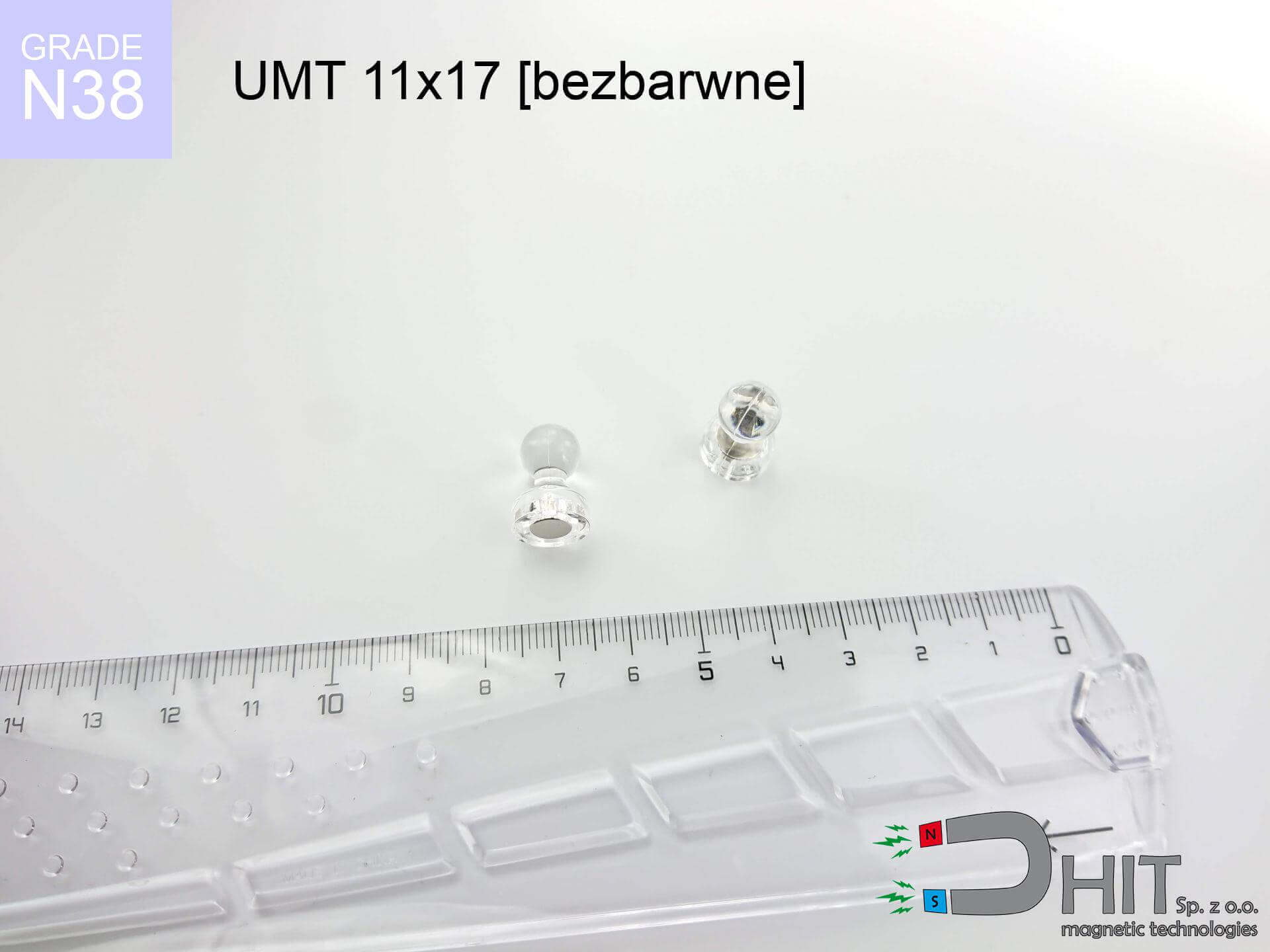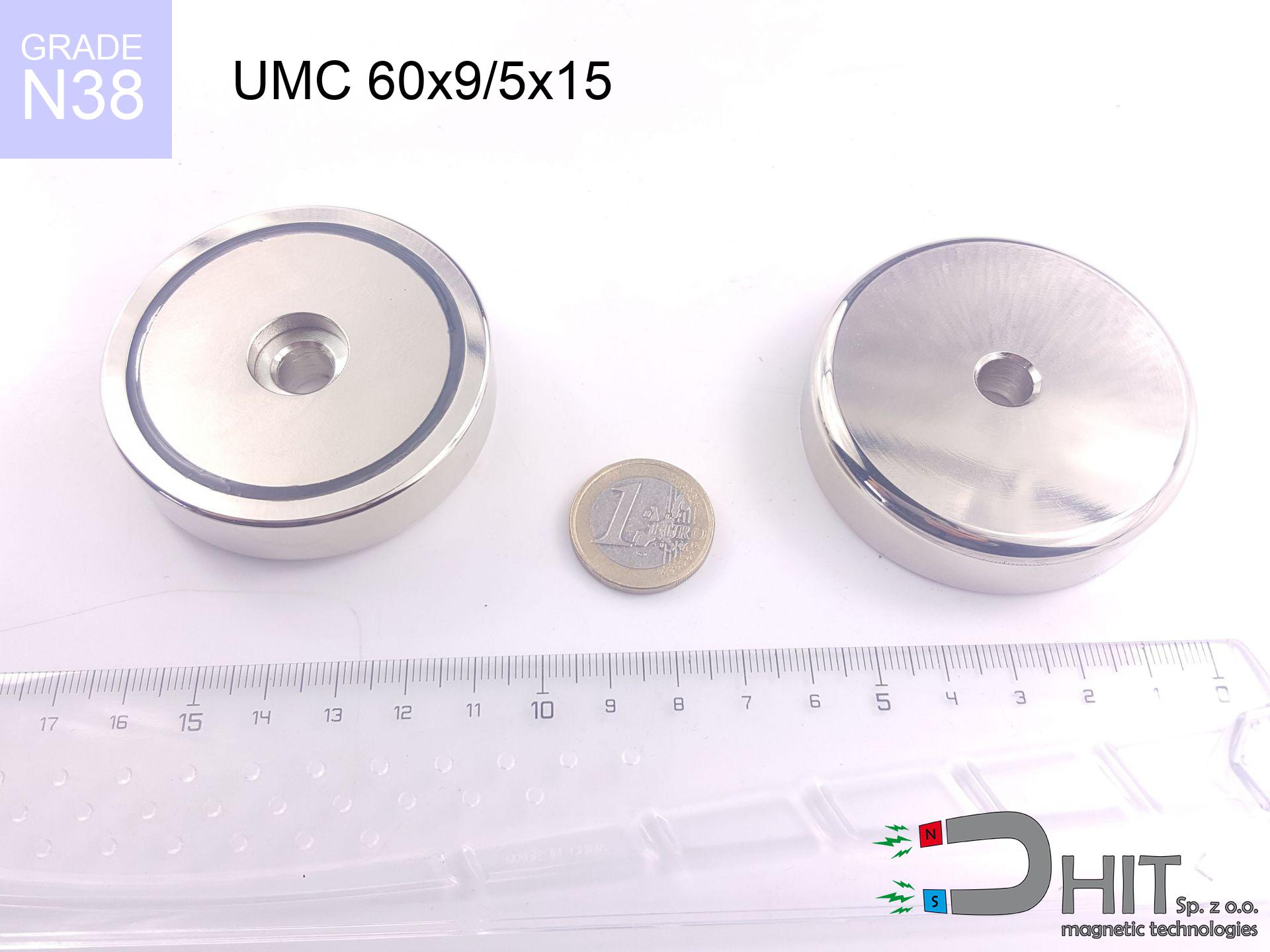MPL 5x5x2 / N38 - lamellar magnet
lamellar magnet
Catalog no 020173
GTIN: 5906301811794
length
5 mm [±0,1 mm]
Width
5 mm [±0,1 mm]
Height
2 mm [±0,1 mm]
Weight
0.38 g
Magnetization Direction
↑ axial
Load capacity
0.68 kg / 6.62 N
Magnetic Induction
360.52 mT
Coating
[NiCuNi] Nickel
0.308 ZŁ with VAT / pcs + price for transport
0.250 ZŁ net + 23% VAT / pcs
bulk discounts:
Need more?Can't decide what to choose?
Give us a call
+48 888 99 98 98
if you prefer drop us a message via
inquiry form
the contact form page.
Parameters as well as shape of magnets can be analyzed using our
power calculator.
Orders submitted before 14:00 will be dispatched today!
MPL 5x5x2 / N38 - lamellar magnet
Specification / characteristics MPL 5x5x2 / N38 - lamellar magnet
| properties | values |
|---|---|
| Cat. no. | 020173 |
| GTIN | 5906301811794 |
| Production/Distribution | Dhit sp. z o.o. |
| Country of origin | Poland / China / Germany |
| Customs code | 85059029 |
| length | 5 mm [±0,1 mm] |
| Width | 5 mm [±0,1 mm] |
| Height | 2 mm [±0,1 mm] |
| Weight | 0.38 g |
| Magnetization Direction | ↑ axial |
| Load capacity ~ ? | 0.68 kg / 6.62 N |
| Magnetic Induction ~ ? | 360.52 mT |
| Coating | [NiCuNi] Nickel |
| Manufacturing Tolerance | ±0.1 mm |
Magnetic properties of material N38
| properties | values | units |
|---|---|---|
| remenance Br [Min. - Max.] ? | 12.2-12.6 | kGs |
| remenance Br [Min. - Max.] ? | 1220-1260 | T |
| coercivity bHc ? | 10.8-11.5 | kOe |
| coercivity bHc ? | 860-915 | kA/m |
| actual internal force iHc | ≥ 12 | kOe |
| actual internal force iHc | ≥ 955 | kA/m |
| energy density [Min. - Max.] ? | 36-38 | BH max MGOe |
| energy density [Min. - Max.] ? | 287-303 | BH max KJ/m |
| max. temperature ? | ≤ 80 | °C |
Physical properties of sintered neodymium magnets Nd2Fe14B at 20°C
| properties | values | units |
|---|---|---|
| Vickers hardness | ≥550 | Hv |
| Density | ≥7.4 | g/cm3 |
| Curie Temperature TC | 312 - 380 | °C |
| Curie Temperature TF | 593 - 716 | °F |
| Specific resistance | 150 | μΩ⋅Cm |
| Bending strength | 250 | Mpa |
| Compressive strength | 1000~1100 | Mpa |
| Thermal expansion parallel (∥) to orientation (M) | (3-4) x 106 | °C-1 |
| Thermal expansion perpendicular (⊥) to orientation (M) | -(1-3) x 10-6 | °C-1 |
| Young's modulus | 1.7 x 104 | kg/mm² |
Product Engineering Report
The following data is a result of physical simulation. Actual conditions may vary.
MPL 5x5x2 / N38
| Distance (mm) | Induction (Gauss) / mT | Pull Force (kg) | Risk Status |
|---|---|---|---|
| 0 mm |
4862 Gs
486.2 mT
|
0.95 kg / 949.1 g
9.3 N
|
Low Risk |
| 1 mm |
3288 Gs
328.8 mT
|
0.43 kg / 434.1 g
4.3 N
|
Low Risk |
| 2 mm |
1977 Gs
197.7 mT
|
0.16 kg / 157.0 g
1.5 N
|
Low Risk |
| 5 mm |
347 Gs
34.7 mT
|
0.00 kg / 4.8 g
0.0 N
|
Low Risk |
| 10 mm |
68 Gs
6.8 mT
|
0.00 kg / 0.2 g
0.0 N
|
Low Risk |
| 15 mm |
23 Gs
2.3 mT
|
0.00 kg / 0.0 g
0.0 N
|
Low Risk |
| 20 mm |
10 Gs
1.0 mT
|
0.00 kg / 0.0 g
0.0 N
|
Low Risk |
| 30 mm |
3 Gs
0.3 mT
|
0.00 kg / 0.0 g
0.0 N
|
Low Risk |
| 50 mm |
1 Gs
0.1 mT
|
0.00 kg / 0.0 g
0.0 N
|
Low Risk |
MPL 5x5x2 / N38
| Surface Type | Friction Coeff. | Max Load (kg) |
|---|---|---|
| Raw Steel | µ = 0.3 |
0.28 kg / 284.7 g
2.8 N
|
| Painted Steel (Standard) | µ = 0.2 |
0.19 kg / 189.8 g
1.9 N
|
| Greasy/Slippery Steel | µ = 0.1 |
0.09 kg / 94.9 g
0.9 N
|
| Magnet with Anti-slip Rubber | µ = 0.5 |
0.47 kg / 474.6 g
4.7 N
|
MPL 5x5x2 / N38
| Steel Thickness (mm) | % Efficiency | Real Pull Force (kg) |
|---|---|---|
| 0.5 mm |
|
0.09 kg / 94.9 g
0.9 N
|
| 1 mm |
|
0.24 kg / 237.3 g
2.3 N
|
| 2 mm |
|
0.47 kg / 474.6 g
4.7 N
|
| 5 mm |
|
0.95 kg / 949.1 g
9.3 N
|
| 10 mm |
|
0.95 kg / 949.1 g
9.3 N
|
MPL 5x5x2 / N38
| Ambient Temp. (°C) | Power Loss | Remaining Pull | Status |
|---|---|---|---|
| 20 °C | 0.0% |
0.95 kg / 949.1 g
9.3 N
|
OK |
| 40 °C | -2.2% |
0.93 kg / 928.2 g
9.1 N
|
OK |
| 60 °C | -4.4% |
0.91 kg / 907.4 g
8.9 N
|
OK |
| 80 °C | -6.6% |
0.89 kg / 886.5 g
8.7 N
|
|
| 100 °C | -28.8% |
0.68 kg / 675.8 g
6.6 N
|
MPL 5x5x2 / N38
| Air Gap (mm) | Attraction (kg) (N-S) | Repulsion (kg) (N-N) |
|---|---|---|
| 0 mm |
1.42 kg / 1425.0 g
14.0 N
|
N/A |
| 2 mm |
0.24 kg / 240.0 g
2.4 N
|
0.22 kg / 224.0 g
2.2 N
|
| 5 mm |
0.00 kg / 0.0 g
0.0 N
|
0.00 kg / 0.0 g
0.0 N
|
| 10 mm |
0.00 kg / 0.0 g
0.0 N
|
0.00 kg / 0.0 g
0.0 N
|
| 20 mm |
0.00 kg / 0.0 g
0.0 N
|
0.00 kg / 0.0 g
0.0 N
|
| 50 mm |
0.00 kg / 0.0 g
0.0 N
|
0.00 kg / 0.0 g
0.0 N
|
MPL 5x5x2 / N38
| Object / Device | Limit (Gauss) / mT | Safe Distance |
|---|---|---|
| Pacemaker | 5 Gs (0.5 mT) | 3.0 cm |
| Hearing Aid / Implant | 10 Gs (1.0 mT) | 2.5 cm |
| Mechanical Watch | 20 Gs (2.0 mT) | 2.0 cm |
| Phone / Smartphone | 40 Gs (4.0 mT) | 1.5 cm |
| Car Key | 50 Gs (5.0 mT) | 1.5 cm |
| Credit Card | 400 Gs (40.0 mT) | 0.5 cm |
| Hard Drive (HDD) | 600 Gs (60.0 mT) | 0.5 cm |
MPL 5x5x2 / N38
| Start from (mm) | Speed (km/h) | Energy (J) | Predicted Effect |
|---|---|---|---|
| 10 mm |
50.74 km/h
(14.10 m/s)
|
0.04 J | |
| 30 mm |
87.88 km/h
(24.41 m/s)
|
0.11 J | |
| 50 mm |
113.45 km/h
(31.51 m/s)
|
0.19 J | |
| 100 mm |
160.45 km/h
(44.57 m/s)
|
0.37 J |
MPL 5x5x2 / N38
| Technical Parameter | Value / Description |
|---|---|
| Coating Type | [NiCuNi] Nickel |
| Layer Structure | Nickel - Copper - Nickel |
| Layer Thickness | 10-20 µm |
| Salt Spray Test (SST) ? | 24 h |
| Recommended Environment | Indoors only (dry) |
Other deals
Advantages as well as disadvantages of rare earth magnets.
Besides their durability, neodymium magnets are valued for these benefits:
- They do not lose strength, even during around ten years – the drop in lifting capacity is only ~1% (according to tests),
- They possess excellent resistance to magnetic field loss as a result of external fields,
- In other words, due to the glossy surface of silver, the element gains visual value,
- The surface of neodymium magnets generates a maximum magnetic field – this is one of their assets,
- Due to their durability and thermal resistance, neodymium magnets can operate (depending on the shape) even at high temperatures reaching 230°C or more...
- Possibility of individual creating as well as optimizing to defined needs,
- Key role in modern industrial fields – they are used in mass storage devices, electric motors, precision medical tools, and complex engineering applications.
- Thanks to efficiency per cm³, small magnets offer high operating force, with minimal size,
Disadvantages of NdFeB magnets:
- They are prone to damage upon too strong impacts. To avoid cracks, it is worth protecting magnets using a steel holder. Such protection not only protects the magnet but also increases its resistance to damage
- Neodymium magnets lose their force under the influence of heating. As soon as 80°C is exceeded, many of them start losing their force. Therefore, we recommend our special magnets marked [AH], which maintain stability even at temperatures up to 230°C
- They rust in a humid environment - during use outdoors we suggest using waterproof magnets e.g. in rubber, plastic
- Limited ability of making nuts in the magnet and complex shapes - preferred is a housing - magnet mounting.
- Health risk resulting from small fragments of magnets are risky, if swallowed, which gains importance in the context of child health protection. It is also worth noting that small components of these devices can be problematic in diagnostics medical when they are in the body.
- With mass production the cost of neodymium magnets is a challenge,
Maximum lifting force for a neodymium magnet – what contributes to it?
Breakaway force is the result of a measurement for ideal contact conditions, taking into account:
- on a plate made of mild steel, effectively closing the magnetic field
- possessing a thickness of min. 10 mm to avoid saturation
- characterized by smoothness
- under conditions of ideal adhesion (metal-to-metal)
- for force applied at a right angle (pull-off, not shear)
- at temperature room level
Practical aspects of lifting capacity – factors
Please note that the working load will differ influenced by elements below, in order of importance:
- Clearance – the presence of foreign body (rust, dirt, gap) acts as an insulator, which lowers power rapidly (even by 50% at 0.5 mm).
- Force direction – catalog parameter refers to detachment vertically. When applying parallel force, the magnet exhibits significantly lower power (typically approx. 20-30% of nominal force).
- Substrate thickness – for full efficiency, the steel must be adequately massive. Thin sheet restricts the lifting capacity (the magnet "punches through" it).
- Steel type – low-carbon steel gives the best results. Alloy steels lower magnetic properties and lifting capacity.
- Surface quality – the more even the plate, the larger the contact zone and stronger the hold. Roughness creates an air distance.
- Temperature influence – high temperature weakens pulling force. Exceeding the limit temperature can permanently demagnetize the magnet.
* Lifting capacity testing was conducted on a smooth plate of suitable thickness, under a perpendicular pulling force, in contrast under shearing force the lifting capacity is smaller. Additionally, even a minimal clearance {between} the magnet and the plate lowers the load capacity.
Safety rules for work with NdFeB magnets
Operating temperature
Keep cool. Neodymium magnets are sensitive to heat. If you require operation above 80°C, ask us about special high-temperature series (H, SH, UH).
No play value
NdFeB magnets are not intended for children. Eating several magnets may result in them attracting across intestines, which poses a critical condition and necessitates immediate surgery.
Threat to navigation
Navigation devices and mobile phones are highly susceptible to magnetic fields. Close proximity with a strong magnet can permanently damage the internal compass in your phone.
Nickel coating and allergies
Some people experience a hypersensitivity to Ni, which is the standard coating for neodymium magnets. Extended handling may cause a rash. We suggest use protective gloves.
Dust explosion hazard
Fire warning: Rare earth powder is highly flammable. Avoid machining magnets in home conditions as this may cause fire.
Pacemakers
Patients with a pacemaker should keep an safe separation from magnets. The magnetism can disrupt the operation of the life-saving device.
Cards and drives
Device Safety: Neodymium magnets can ruin data carriers and delicate electronics (heart implants, hearing aids, mechanical watches).
Magnets are brittle
Beware of splinters. Magnets can explode upon uncontrolled impact, launching sharp fragments into the air. Eye protection is mandatory.
Respect the power
Before use, read the rules. Sudden snapping can break the magnet or injure your hand. Think ahead.
Bodily injuries
Pinching hazard: The pulling power is so immense that it can cause hematomas, pinching, and broken bones. Protective gloves are recommended.
Warning!
Need more info? Check our post: Are neodymium magnets dangerous?




![SM 18x100 [2xM5] / N42 - magnetic separator SM 18x100 [2xM5] / N42 - magnetic separator](https://cdn3.dhit.pl/graphics/products/sm-18x100-2xm5-pem.jpg)




